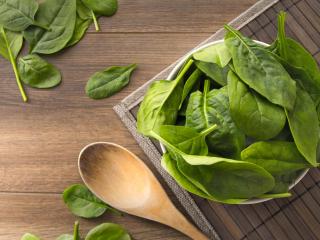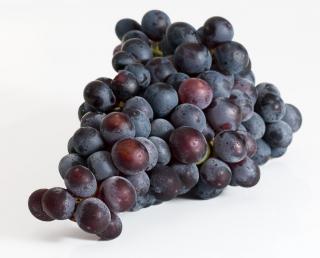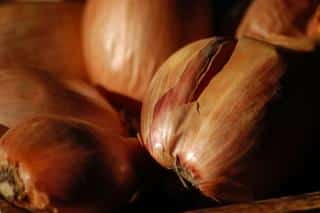The orange tree, Citrus Aurantium (bitter) or sinensis (sweet) is a tree with a round shape that belongs to the Rutaceae (Rue) family.
The orange tree never grows taller than 32 feet (10 meters) tall, and collectively forms the citrus plant that is most grown the world over.
Just to give you an idea, although the French don’t grow oranges much, they eat over 17 kg of these fruits per person per year!
- Gardening: how to grow orange trees
- Health: all our pages connecting plants and health
The orange tree, a short story
Sweet orange is most probably the result of a mutation of the bitter orange tree, about 2,000 years ago. In China and India, bitter oranges were already grown and cultivated 3,000 years ago. The lower Himalayas, near Bangladesh, is most certainly the native area of this citrus.
Greeks and Romans… Nobody was familiar with sweet oranges. The Arabs were the first to introduce the fruit to Egypt and Palestine, which is where the crusaders discovered it. The Portugese successfully spread the orange tree, when they brought it back from China or Ceylan (Sri Lanka) around the 15th century.
Health benefits of oranges
Health benefits of bitter orange
- Bitter orange leaves are used for their sedative properties: they alleviate spasms in nervous persons and help them fall asleep. Bitter orange leaf is also recommended against hacking cough, nervous stomach cramps, heart palpitations and cephalalgia (headache). It is also sometimes used as a febrifuge and a diaphoretic (to increase sweating) in case of colds. Bitter orange essential oil is also called “Petitgrain essential oil”.
- Orange tree flowers can also be used in similar fashion, but it is more often used to produce “orange blossom water” which is very fragrant and is part of pharmaceutical and culinary preparations. It also boasts relaxing properties, too.
- Essential oil that underlies the hydrolate during the distillation process is called “neroli oil”, and is an ingredient in top-quality Cologne. It is famously rare, and has properties that are tonic and stress-relieving.
- Orange has carminative and digestive properties (meaning it helps expel gas build-ups in the digestive tract). Orange infusions lowers fever and soothes headaches. Orange zest is used to make syrup, tincture or alcoholates. Oranges are great appetite enhancers, excellent stomach tonics that increase digestion. When pressing the fruit, “bitter orange essence” is extracted.
Health benefits of oranges
- The sweet orange tree is part of the most cultivated fruits in the world. If today, almost anyone can savor a delicious orange juice for breakfast, this was definitely a luxury in the XIXth century.
- With sweet orange, such delicacies as refreshing and tangy syrups can be made, and a type of lemonade, too: orangeade! Syrups and orangeade are both recommended for their health benefits in case of fever.
- Sweet orange zests are the source of sweet orange essential oil, also called Portugal essential oil, which is used in perfume.
- Leaves and flowers of sweet orange trees: they have the same properties as those of bitter orange.
- Zests are indicated in case of problems linked to fragile blood vessels, such as bruises.
- Bed-ridden persons, or persons who have just been operated and are recovering, often feel pain in their heels. In this case, simply slice an orange in half, carve out the flesh, and cap your heels with the half-rinds.
How to use it best
Ingestion
- Orange infusion: ⅔ oz (20 g) of flowers or leaves for 1 quart (1 liter) of water. Steep for 10 minutes. Drink 2 to 3 cups a day, with one of those just before sleeping to induce sleep. To increase the fragrance and the effectiveness, feel free to add a couple drops of orange blossom water.
- Decoction of orange tree leaves: 120 to 150 leaves for 1 quart (1 liter). It was used in olden days to treat epilepsy and in case of severe nervous disorders.
- Bitter orange tree bark syrup: this syrup is tonic and stomachic. Preparation: 3.5 oz (100 g) dry zests chopped and macerated for 12 hours in 3.5 oz (100 g) alcohol (60% volume). Filter and add syrup prepared with 12 oz (350 g) to 1 quart (1 liter) water. Eases digestion.
- Tonic and appetite-inducing orange wine: macerate 3.5 oz (100 g) dry bitter orange zests in 1 quart (1 liter) white wine with a couple chamomile flowers.
External use
- Orange tree leaf and flower infusion: smooths and nourishes skin.
Growing orange trees to benefit from their medicinal properties
To grow an orange tree, neutral pH soil is ideal. Choose a clay soil, that retains water and fertilizer but not excess moisture. As for exposure… Sun!
The trunk can cope with 16°F (-9°C), but leaves die off under 26°F (-3°C). Between 32 and 50°F (0 to 10°C), orange trees stay in a dormant state. To bloom and bear fruit, it must grow in areas where the average yearly temperature is at least 57°F (13°C).
Take note, though, that orange tree also doesn’t really like strong heat. Over 95°F (35°C), it again enters dormancy. Last tip: avoid wind-scoured places because branches break easily, especially when they are loaded with fruits.
Smart tip about orange trees
Whether you choose to grow it in pots or directly in the ground, don’t scratch the soil surface any deeper than 2 inches (5 cm) when weeding, because you might damage superficial roots. They are fragile and any wound is an open door to disease.
What about potted orange trees? Yes, it can be done. But you must know that only a lean-in or a cool greenhouse will help it overwinter without any problems. In garden boxes, these are very ornamental plants.
Watch out for small bugs!
When orange trees fall sick, most often this can be traced to poor growing conditions.
- Scale insects often invade citrus trees (they can be eliminated by treating with white oil, which will suffocate them). Mites and ticks distort leaves and young stems, making them look heavy.
- Citrus blossom moth larvae attack stamens and hinder fruit formation.
- Chlorosis symptoms are a yellowing of leaves.
- Several different viral infections also can lead orange trees to wilt away. If growing in a sheltered place, watch out for whiteflies.
- Gardening: how to grow orange trees
Orange species and varieties
There are three major types of oranges: Valencia oranges, navels and blood oranges.
The Valencia oranges are divided into common cultivars and fine cultivars.
Common cultivars grow easily along coastal waters and produce small, tasteless fruits.
Fine cultivars are of much better quality, and mature between November and March. Among these are:
- ‘Valencia Late’ – late, juicy, sweet.
- ‘Maltese’ – one one of the best, matures rather well in mild-wintered climates.
- ‘Jaffa’ – large fruits, fragrant flesh.
- ‘Salustiana’ – large fruits, rather hardy.
Navels – these are mature in November. Their distinct feature is that a second orange embryo forms inside another orange. They are sweet and are easy to quarter.
- ‘Washington Navel’, ‘Navelina’ and ‘Navelate’ are the most common ones.
Blood oranges – these mature in February.
- ‘Moro’, ‘Sanguinelli’ are the favorite varieties that connoisseurs mention. However, they produce for only a short time and require a lot of heat to mature.
Semi-sanguine oranges also exist.
- ‘Semi-blood Maltese’, ‘Enhanced double fine’: these produce fruits for harvest in March and April.
Using oranges in cooking for their health benefits
You can of course savor oranges fresh, either raw or pressed, in jams, marmalade or ice cream. Orange can be added to sauces or be candied. Infusions prepared from 0.7 oz (20 g) of leaves opens one’s appetite. As for orange blossom, it is a sedative often found in herbal tea.
Nutritional content of orange
45 kcal / 3.5 oz (100 g). An orange covers most daily needs for an adult in vitamin C (80 to 110mg/day). Orange also has high trace element and organic acids levels, which combine with alkaline substances in our body to produce carbonates and bicarbonates which have acknowledged benefits in case of heartburn and arthritis.
Savory idea with oranges
Now is to open up to tasting orange carpaccio. This quick and easy recipe is impossible to mess up! In your shopping list: oranges, a few mint leaves, a little cinnamon and the result is delicious!
A few synonyms of “orange” to shine in public…
The word “orange” actually comes from Sanskrit. The same root became naranja in Spanish, laranja in Portugese, naranza in Venice and naranj in the Arab world. Bitter orange is also called the “Seville orange”.
Blandine Merlin
Orange benefits on social media
Click to open posts in a new tab. Follow us there, comment, and share!
Also nice: create or join a topic on our garden and health forum, too.
 |
 |
Orange & juice (also on social media) by Pixel2013 under Pixabay license
Crate with oranges by Bruno Glätsch under Pixabay license





How can i get the seeds to plant in my garden?
Hi Kubra, Nature & Garden doesn’t sell seeds or plants. The best is definitely to check with a real nursery store nearby: they’re sure to have orange trees, and the varieties they sell will match your climate perfectly. However, if you don’t know of any good garden store nearby, there are a lot of companies that sell seeds, cuttings and young trees on the internet, too!
Note that sowing seeds for citrus always has a little bit of uncertainty. Because of cross-pollination and hybridization, children are sometimes quite different from the parent plants. Cuttings is a much better option, you’re sure of what you get that way.